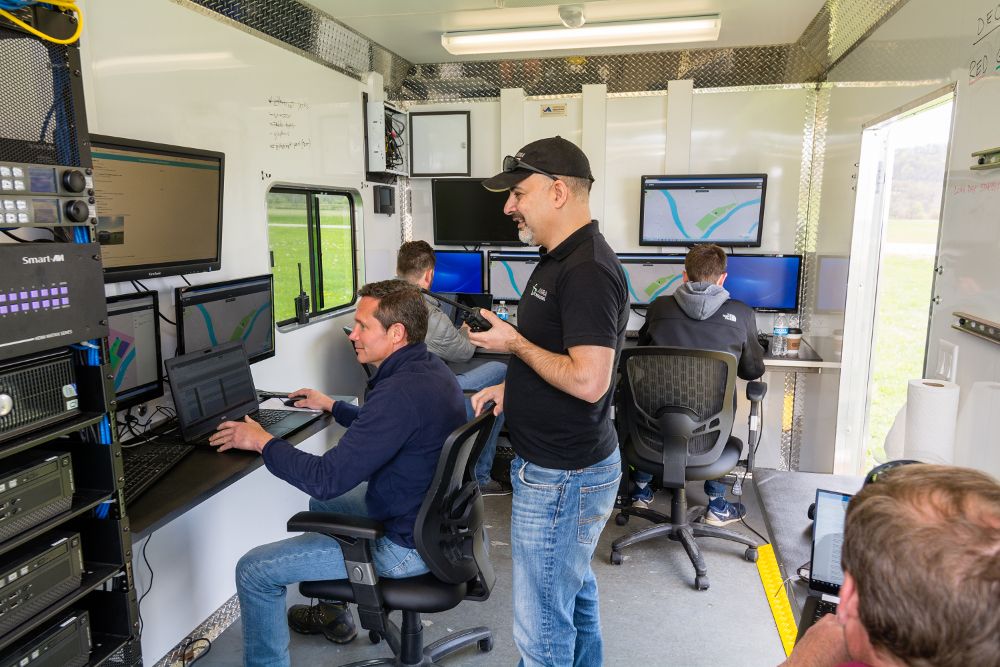The Business of UAS Traffic Management (UTM)
We’re witnessing a massive global surge in the volume of drones. Used by civilian law enforcement agencies, business enterprises and even government departments, purposeful expansion of “the drone economy” is well and truly underway. A Goldman Sachs report estimates the total global market size of drone technologies at $100 billion as of 2020. Of this, the commercial drones segment is worth $13 billion and is registering the fastest growth. BCG also sounds a similarly bullish sentiment.

UTM technology brings all drone industry stakeholders together on a single unified platform. Think civilian law enforcement, defense, manned air traffic systems, aviation regulators, drone operators, drone manufacturers, drone pilots and enterprises using or deploying these drones. UTM platforms integrate multiple data sources emanating from these stakeholders to include weather and terrain data, unique drone registration IDs, drone type, pilot identity, details of the operating organizations, planned and actual flight paths, no-fly zones, surveillance data, etc.
UTM platforms are horizontal integrators of public and private data streams which help in critical decision support like safety, compliance, de-confliction, and identification. UTM-related data can be classified as follows:
Raw data: Reported on an as is, where is, whatever is basis.
Derived data: A specific data point arrived at by calculating data from multiple sources.
Enriched data: Derived data benchmarked with industry, enterprise, competitor or regulatory standards.
All efforts presently underway are aimed at making UTM platforms as safe and efficient as possible. The current UTM platforms are focused on the regulators, drone manufacturers, owners, operators and pilots. Current government efforts worldwide, supported by many private software players are all seeking to find a solution to their UTM requirements.
Beyond their obvious mandate, what would be the next logical paradigm for UTM platforms? We believe it’s about making them more business-facing. With commercial drone fleets set to increase over the next few years, UTM platforms will help generate valuable and proprietary business datasets.
Let’s examine a few business cases:
E-Commerce
The permission to fly drones beyond visual line of sight (BVLOS), will give rise to delivery drones. A fleet owner can accurately gauge the power or fuel consumption of the drones by mapping parameters like speed, flight time, flight path, altitude, and gross weight. The most efficient routing can be calculated and drone fleet managers (and customers) can get updates on delivery time. UTM will help map delays and also display the reasons for delay.
Actuaries
Low altitude airspace flying will mean countering obstacles like high rise buildings, trees, and inclement weather. A hovering drone also runs the risk of sabotage or pilferage. If a drone is carrying parcels, that’s a natural case for transit insurance. Crashes will result in property damage and personal injury, potentially leading to compensation claims and litigation. A UTM platform can provide historical flight data with geospatial references and hyper-local weather data points. These data sets will greatly help insurance companies to process claims.
Dashboards
As drones transition to become mainstream capital assets, UTM platforms can display relevant dashboards that capture operational performance. For example, a fleet manager can get real-time operational status of his fleet or the status of his current inventory levels and delivery status.
Drone service companies can also get dynamic profit/loss visibility if the UTM platform is properly integrated with the ERP system. Just as airlines have their ratios like load factor, yields, RASK and CASK, in time, UTM platforms will help calculate similar drone-centric usage and efficiency ratios.
Conclusion
We have illustrated only select cases. As UTM technologies evolve, more such examples will emerge. We clearly see UTM platforms becoming as important as SAP, ERP, Core Finance and SCM systems. Of course, UTM platforms will have to be fused with these enterprise software packages using robust APIs. UTM platforms will play a crucial role in business strategy in enterprises where drones would be a key to their operations.
As the adage goes, “data is the new oil.” If that is true, then “UTM is the new oil well.”
To learn how ANRA Technologies can successfully integrate drones in your enterprise strategy, click here to talk with or meet us.







